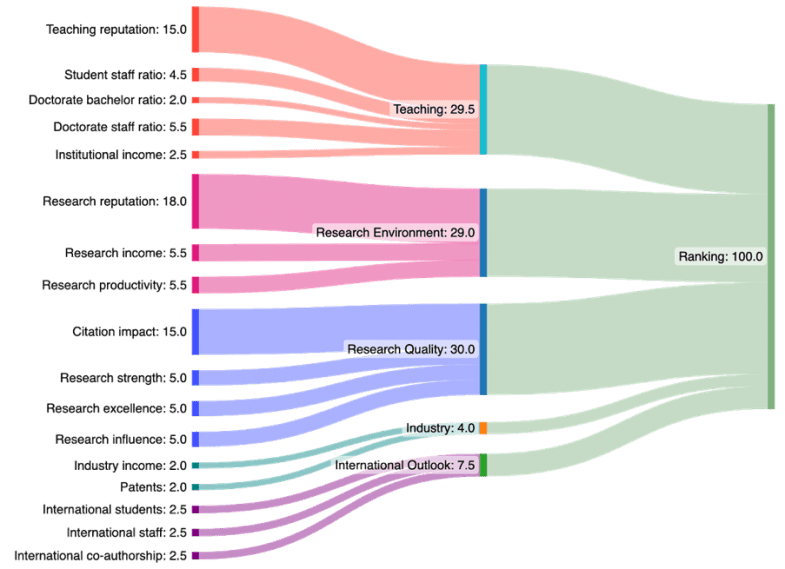As we approach the end of data collection for the latest edition of the World University Rankings it’s useful to take another look at the methodology and highlight the key aspects and the changes that we are making this year. These decisions have been made after extensive open discussion and consultation and have been carefully considered and evaluated to maintain the robustness of our World University Rankings.
As always, we are asking universities to provide data for their entire institution, as well as in our 11 broad subject areas. This, together with data from our academic survey and from our bibliometric partners Elsevier, forms the core data from which we build out our metrics.
This year’s academic survey is bigger than ever before. Over the past two years we have brought the process in-house, meaning that we have better control over the survey. It has also meant that we have been able to grow the number of respondents from approximately 11,000 to over 37,000 per year. In total this gives us more than 67,000 voters and 900,000 votes for this year’s rankings.
We are also introducing four new metrics this year: three that look at citations, and one that examines patents.
The new citation measures will sit alongside our existing citation measure – field-weighted citation impact – in our renamed Research Quality pillar.
The three new measures will each give us a new insight into the shape of research at universities. Research strength will look at the 75th percentile of field-weighted citation impact – a guide to how strong typical research is. Research excellence will look at the amount of research in the top 10% worldwide – a guide to the amount of world-leading research at an institution. Research influence will help us understand when research is recognised in turn by the most influential research in the world – a broader look at excellence.
Each of these new metrics will be evaluated at 5% in the rankings and will sit alongside the current measure which will be reduced to 15%. Maintaining the existing measure increases year-on-year stability, and crucially supports universities that are using it to track their own progress.
Joining the Industry Income measure in our Industry pillar is the final new measure: Patents. This measure explores how often a university’s research is cited in patents. Both Industry Income and Patents will be worth 2% in the ranking, bringing the overall weighting up from 2.5% to 4% of our ranking.
As a result of this we will be slightly reducing the Teaching and Research Environment pillars from 30% to 29.5% and 29% of the ranking, respectively.
The final adjustment to the methodology has been to change our normalisation approach for the three measures in the International Outlook pillar. We will now take account of the population of a country when evaluating these metrics.

Alongside these changes we have also been working hard to expand our data validation and checking process. Our data editors use comparisons to previous year’s data and statistical techniques to identify areas where we need to approach universities for verification. We also link to more than 70 external data sets against which we validate provided data.
We are very much looking forward to exploring the results when they are published at the World Academic Summit taking place 26-28 September in partnership with the University of Sydney, Australia.
Register to continue
Why register?
- Registration is free and only takes a moment
- Once registered, you can read 3 articles a month
- Sign up for our newsletter
Subscribe
Or subscribe for unlimited access to:
- Unlimited access to news, views, insights & reviews
- Digital editions
- Digital access to THE’s university and college rankings analysis
Already registered or a current subscriber? Login








